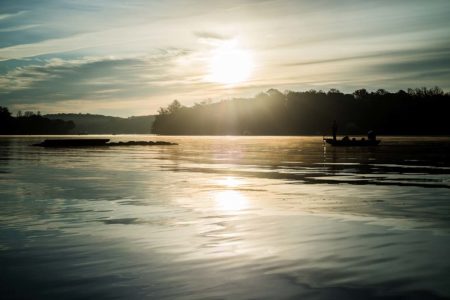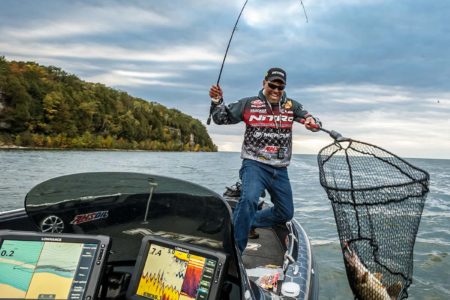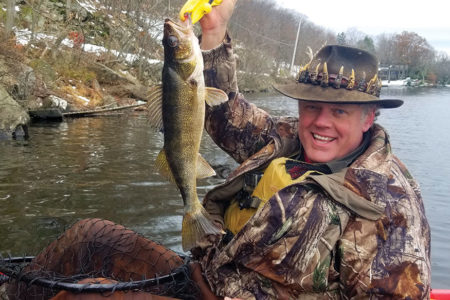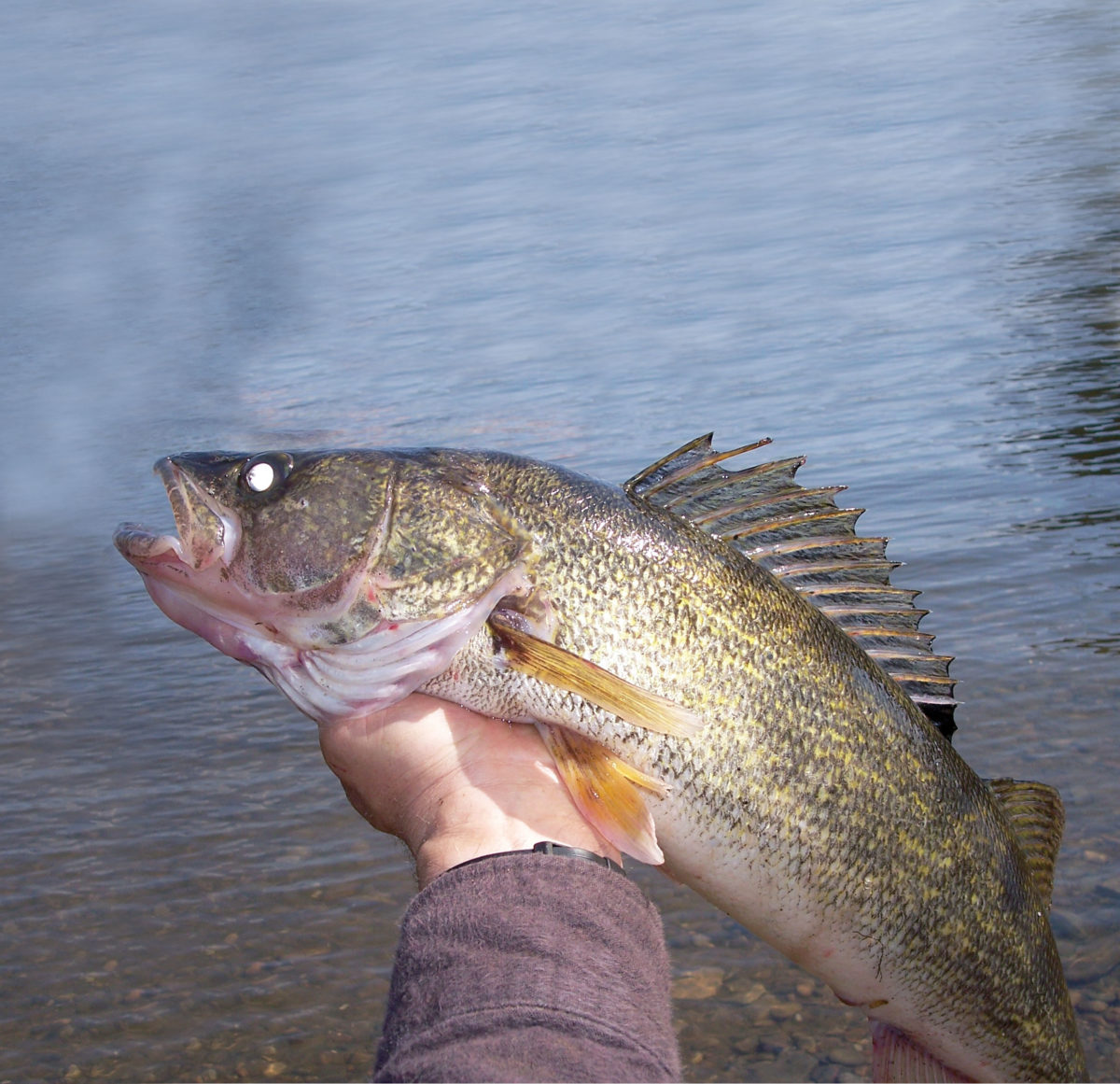
Regarded as the best tasting fish in the freshwater arena, walleye action heats up this month on the upper Delaware River.
The month of March sees winter’s last gasp and spring’s first breath. Gradually warming temps put new life into the water and some of the first places to wake up are the rivers and streams.
Likewise warmer water temps put the fish on the move and one of the first fish to serve up some good action in the Delaware River is the walleye population.
The truth is walleye are a cold water fish and remain active through the winter. By late February they are heading to the spawning grounds, and the warmer water temps put them on the feed. This often produces some of the best walleye fishing and some of the biggest marbleyes of the year.
Gear Up for Walleye
When it comes to tackling Delaware River walleye, keep your rod and reel choices, both spinning and conventional, in the light to medium action class as these fish have a reputation for being light hitters, especially during the early season. In the line department use 4- to 8-pound test for spinning and 6- to 10-pound test for conventional. Stock your tackle box with a Lindy and egg sinkers, as well as split shot of various sizes.
Light wire long shaft hooks in sizes 4 to 2/0 will serve you best for fishing bait on the rocky bottoms. Throw in some Eerie Derrie type bait rigs and floating jigheads to round out your bait tackle.
In the lure department a variety of jigs in different sizes are a must. Likewise Rapala Countdowns, deep running crankbaits and swimming plugs are standard fare. Spinner jigs such as Road Runners are also a good addition and an assortment of plastic baits to dress your jigs with is a must.
One might think during the early season the time of day you fish would not be a detriment. The truth is no matter what time of year it is walleye have an affliction for light and prefer nighttime, early morning and early evening, with early evening holding the edge. A couple of hours before dark and a couple of hours after dark are prime time.
Favorable Conditions
A river, unlike a still body of water, is subject to quick change and if you want to catch walleye you have to know how to deal with the current river conditions, mainly high or low water. Walleye will be active in both, but will be found in different areas in each. While the boat fisherman has a definite advantage, that being able to fish structures such as bridge pilings or around islands, under the right conditions and on the right structures the shoreline fishing can be just as good.
When the water is high you will find good shoreline fishing in the eddies along the shorelines, a lot of times in places you would not find them under normal water levels. When the water is low many of the spots that will produce under high water conditions will not have enough water to be productive.
When it comes to the top structures eddies will be your number one choice and in the springtime they will be greatly enhanced when there is a gravel or silt bar, which is a spawning area, close by. After spawning during the day they move into eddies in the evening, and this is where they go on the feed.
Structure Analysis
There is no question that two of the most productive spots for the boat fisherman are eddies below bridge pilings and islands. When it comes to bridge pilings the bigger and deeper the eddy, the better, as this makes them productive under both high and low water conditions. Always anchor your boat to the shallow side of the eddy and fish the deeper side. In most cases the calmest part of the eddy is found just below the piling. This is an area you want to fish with jig-plastic bait combinations and jigs dressed with minnows.
Most eddies found below bridge pilings have their shallow water located down from the eddy. When walleye move into the eddy and are on the feed they stack up along the inside of the current line along the deeper side and look to the current for a meal. In this case a Countdown or jig-plastic bait combination cast to the head of the current line and worked with the current down the current line and back up into the deeper part of the eddy will do the trick. In larger eddies you can also anchor up towards the top of the eddy and work bottom walking rigs baited with minnows, leeches or worms along the deep side of the current line.
Our second hot spot for boat fishermen has many variations. The two most common are islands located on a river bend and those that are located on a straight stretch of water. The difference between the two is in the placement of the downstream eddy and bars. Islands located on a straight section of river usually see a bar just below the island and the eddy located along one side or down from the bar. The best way to fish the eddy is to anchor your boat in the shallow water and work bottom rigged baits or slowly retrieve Eerie Derrie bait combinations in the deeper water. You can also cast and retrieve deep diving swimming plugs or crankbaits in the deep water.
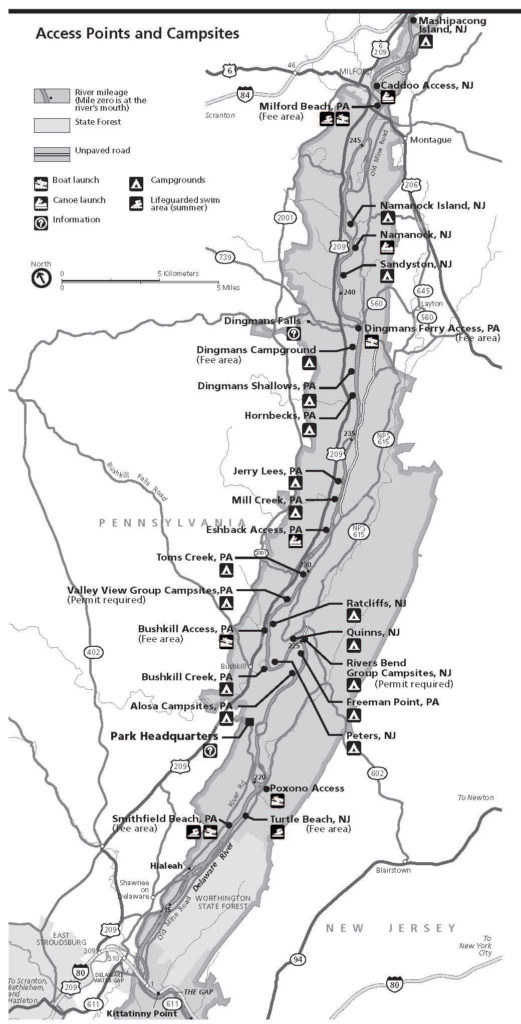
Island Oasis
When it comes to islands located on a river bend, they usually have an eddy directly down from the island with a bar located to the side of the eddy. Of the two this is the more productive.
The best way to fish this type of eddy is to anchor or tie off your boat to the island and release some anchor line and jig or work your lures or baits in the deeper water. If the eddy is big simply release more anchor line and check out another section of the eddy. You can repeat this process until you cover the deep water or come in contact with the walleyes.
The top structure for spring walleye for the shoreline fishermen are the many points of land that jut out into the current of the river. In many cases these eddies are located at the mouth of a tributary stream. In some cases they are also products of an outcropping of a rock or shale formation. Water swirling around the point of land creates an eddy below and along the inside of the rocks.
If you can get out on the point you can cast deep diving crankbaits and swimming plugs downstream and work them along the inside seam of the current line where the slow water of the eddy meets the current. Fishing bottom walking rigs with bait also works.
A Shore Thing
When fishing from the shoreline, position yourself down from the point of land and cast your lures into the current and allow the current to sweep your Countdown or jig combination along the inside seam of the current line. Once the lure is downstream reel it back to your position with a stop and go retrieve through the eddy.
Last but not least, many times high water conditions create numerous eddies close to the shoreline. When high water conditions are present you can simply walk along the shoreline and cast your Countdowns and jig combinations into these pockets and pick away at the marbleyes that will hold there out of the current.
One drawback to this type of fishing is that your rig can get hung up on the bottom or over hanging trees so it will cost you some tackle. That’s why jig combinations are a better choice for fishing these eddies over the more expensive plugs.
Walleye can give you some good early season action in the big river. However, remember water temps are cold and waters can be swift in the early season so use extra caution when chasing ol’ marbleye in the late winter and early spring.
| SPOT BURN BY BOAT OR BY BANK |
|---|
| Two of the best eddies for walleye on the Delaware River located below islands are those that are found below Poxono Island in Worthington and Raubs Island, which is located north of Riegelsville. Both have sizable eddies and water in excess of 25 feet and are well know as walleye producers. Two of the top walleye producing points of land are the Point Pleasant Eddy located below the point of land at the mouth of the Tohickon Creek and the eddy located below the point of land on the Byram, NJ side just below the old bridge pilings. |

